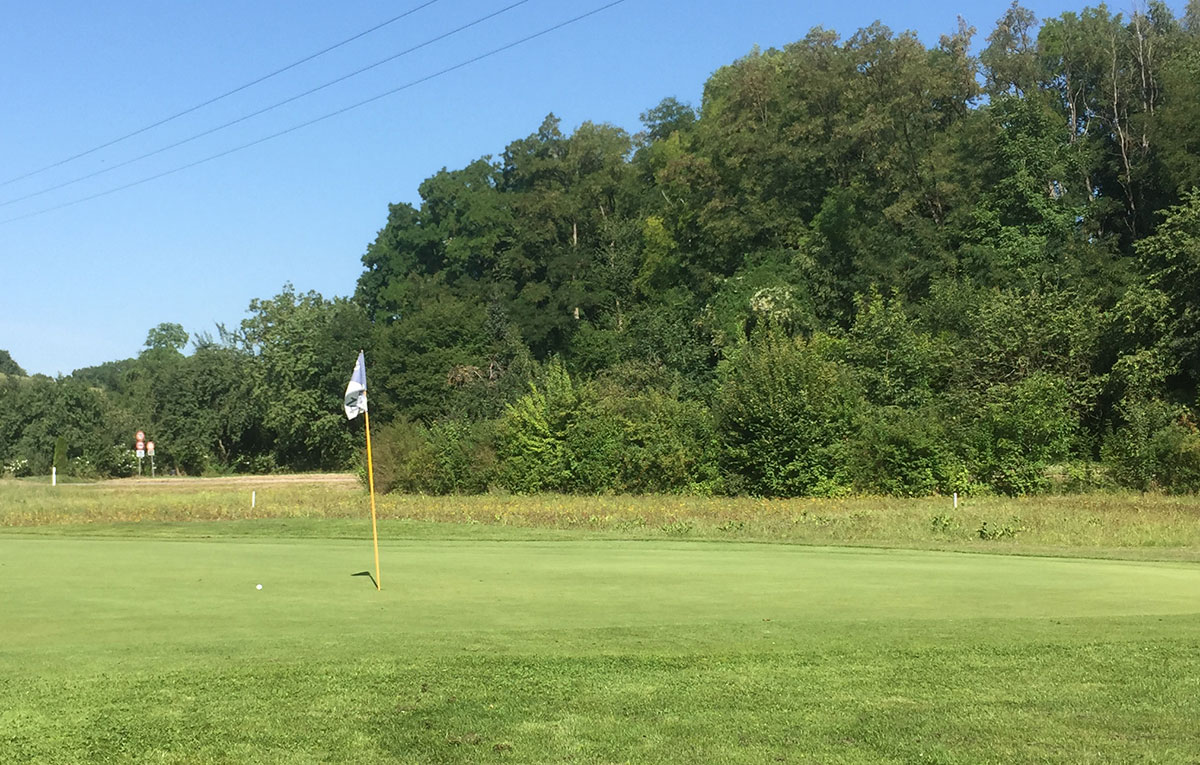After the first golf lesson, one thing quickly became clear to me: Without practice, this sport is not going to work! In tennis, soccer or other sports you can still muddle through with speed, commitment and athleticism, but here every mistake is immediately punished with a bad shot.
But how and what is the best way to start?
Chipping and Pitching
Our coach advised us not to go straight to the driving range and “hit” balls. We should rather concentrate on the short game – i.e. the approach shots to and the putting on the green.
My research coincided with his statement and reports from pros who say they use wedges 50% of the time in practice. Wedges are clubs for approaching or short shots: 9 iron, PW (pitching wedge) and SW (sand wedge). Of course, you can hit further with these by hitting them “full”. But for the approach and the beginning this is not necessary. You can even use your longer irons for pitching to get on the green for longer distances.
Other statements say that if you can’t hit with the wedge, you shouldn’t even try with the other clubs.
By the way, there are 3 other forms of wedges: the gap wedge, lob wedge and high lob wedge. The first one is placed between the pitching wedge and the sand wedge. The last two after the sand wedge. These 3 types are not important for the beginner at first.
Approach swings are of different lengths. For beginners, who of course can’t hit that far yet, this rule applies (Attention, these values come from me and are different for everyone. I know beginners who hit 100 meters with the pitching wedge):
Pitching distances and clubs
50 to 70 meters: 7- 9 iron
30 to 50 meters: Pitching wedge
20 to 30 meters: Sand wedge
When pitching, as I said, you don’t make full, fast strokes, but rather deliberate ones. If you are talented, you can also experiment with different widths of swing and note how far you get in each case.
Chipping distances and clubs
10 to 20 meters: 9 iron (or even 7 or 8)
below that: Pitching wedge or sand wedge
Chipping is only used when you are a few meters from the edge of the green. There are different hitting techniques here, which I will get to in another report.
Whether you are chipping or pitching, you should be aware that the clubs you use all have different flight and roll lengths. The 9 iron flies flatter and rolls farther than a sand wedge. With the latter, balls fly higher but roll less.
The art is to use the right club and hitting technique for each individual playing situation.
What good is it if the ball lands on the green but rolls another 20 meters and then ends up in the bunker behind the green?
Here you simply have to practice and try out until you develop a feeling for your own driving distances and conditions on the golf course (wet grass, dry course, slope of the terrain, etc.).
How do I improve my short game?
1. Rather play flat
A high ball flight is very impressive! I know 🙂
But there is always a chance when hitting the ball to hit it wrong (especially with bad ball positions). And then? The ball flies flat, uncontrolled and way too far! So if there is no need for a high ball flight (over bunkers or obstacles), then rather choose a club with which you have to swing less. An 8 iron played short can then achieve the same distance as a pitching wedge.
2. Do not train only from mats
If you look around the practice range, you will quickly notice that most are teeing off from “mats”. That might be okay for a warm-up, but will you find mats on your golf club’s fairway? Of course, you won’t. So find different greens to practice on: Short grass, tall grass, no grass, sloping and uneven terrain, etc. This is the only way to prepare yourself for the surprises a golf course has in store for you 😉.
3. Do you know your hitting distances?
Whether you hit the driver 10 meters longer is not a problem. But an approach that is 10 meters too long will end up in the bunker or water at worst. As you can see, especially in the short game, it is extremely important to know your stroke distances exactly. Make shots with your wedges with different sized backswings (7, 9 and 11 o’clock for example) and note the approximate mid-length.
4. Are your wedges suitable?
Some wedges have a large bounce to provide a large buffer for the sand in the bunker. However, this bounce is extremely unsuitable for hard surfaces and results in “topped” balls because you can’t get under the ball. It is best to discuss your material with your pro.
5. Play similar balls
A hard ball usually flies farther than a soft one. Especially on the approach, this makes a difference of a meter or two.
Many amateurs play different balls. How will you play consistently if the balls are always different? Pick one type of ball and stick with it. This is the only way you can develop a feel for the short game.
6. Practice ups-and-downs
Not every approach shot lands on the green. Practice shots 1 to 30 feet from the edge of the green and chip and putt to try to save your personal par!

